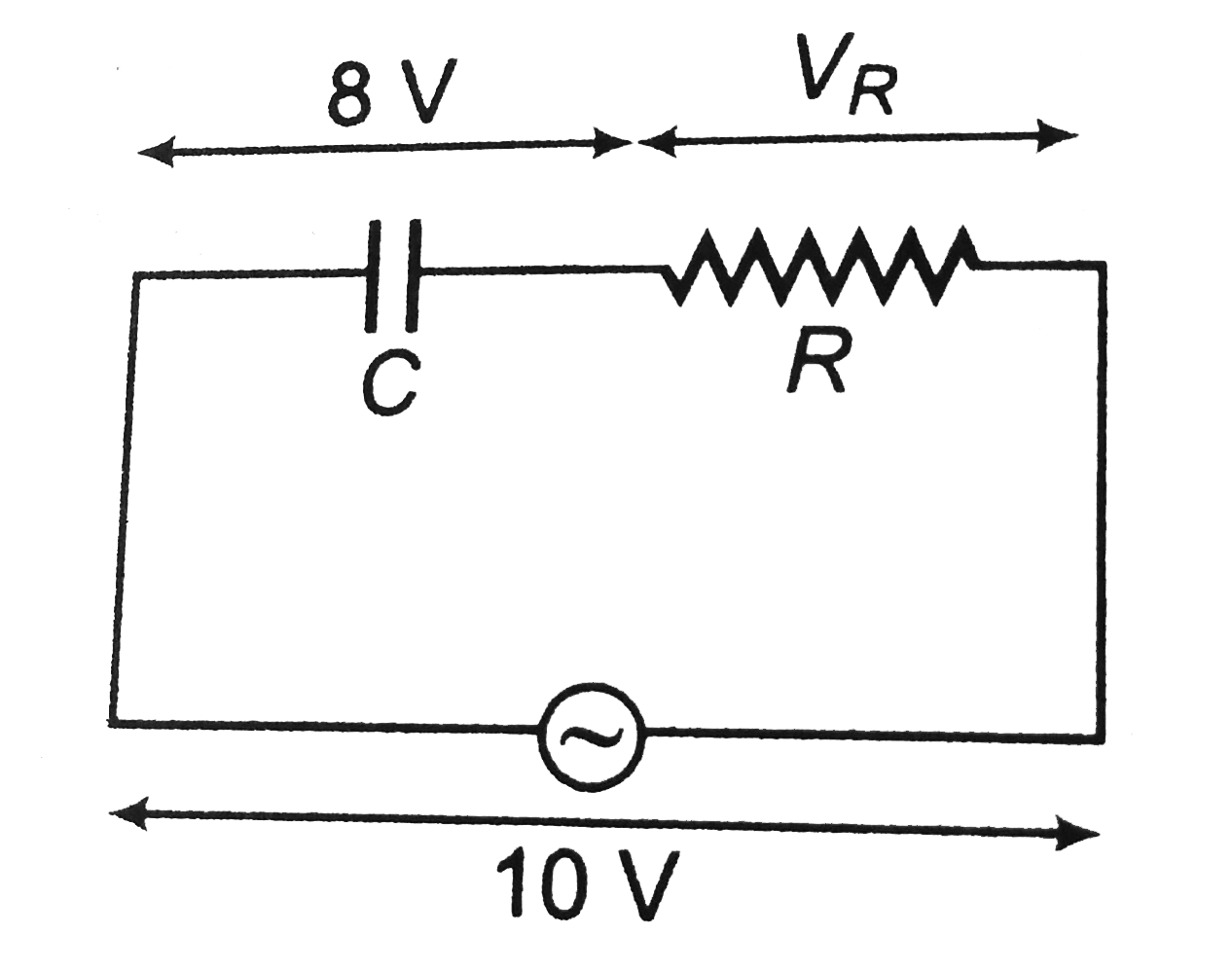When L and C are in series, voltage across them is in phase (True/false). The current in them is in phase (true/false).
False, True
In series current at any time is same in entire circuit. Hence, current is in phase in both L and C. In risistor, voltage is in same phase as current byt in inductro, voltage leads current by (π)/2. So inductor voltage leads resistance voltage by (π)/(2).
Topper's Solved these Questions
- BOOK - CENGAGE PHYSICSCHAPTER - ALTERNATING CURRENTEXERCISE - Exercises Subjective15videos
ALTERNATING CURRENT
- BOOK - CENGAGE PHYSICSCHAPTER - ALTERNATING CURRENTEXERCISE - Exercises Single Correct63videos
ALTERNATING CURRENT
- BOOK - CENGAGE PHYSICSCHAPTER - ALTERNATING CURRENTEXERCISE - Solved Examples6videos
ALTERNATING CURRENT
- BOOK - CENGAGE PHYSICSCHAPTER - OSCILLATIONSEXERCISE - QUESTION BANK39videos
OSCILLATIONS
- BOOK - CENGAGE PHYSICSCHAPTER - ATOMIC PHYSICSEXERCISE - ddp.4.315videos
ATOMIC PHYSICS
Similar Questions
In a series LCR circuit, the frequency of the source is more than resonance frequency. The current in the circuit leads the voltage in phases(True/false).
View SolutionWhen an alternating voltage of 220 V is applied across a device X, a current of 0.25 A flows which lags behind the voltage in phase by π2 rad. If the same voltage is applied across another device Y, the same current flows but now it is in phase with the applied voltage.
(a) Name the devices X and Y.
(b) Calculate the current flowing in the circuit when the same voltage is applied across the series combination of X and Y.View Solution
Knowledge Check
- Question 1 - Select One
Phase difference between voltages across L and C in series is
A0∘B90∘C180∘D360∘ - Question 2 - Select One
In a series C−R circuit shown in figureure, the applied voltage is 10V and the voltage across capacitor is found to8V. The voltage across R, and the phase difference between current and the applied voltage will respectively be
 .A6V,tan−1(43)B3V,tan−1(34)C6V,tan−1(34)Dnone of these
.A6V,tan−1(43)B3V,tan−1(34)C6V,tan−1(34)Dnone of these - Question 3 - Select One
For a series R-L-C circuit :-
(a) Voltage across L and C are differ by π
(b) Current through L and R are in same phase
(c) Voltage across R and L differ by π/2
(d) Voltage across L and current through C are differ by π/2Aa,b,cBb,c,dCc,d,aDALL
Explain : voltages across L and C in series are 180∘ out of phase, while for L and C in parallel, current in L and C are 180∘ out of phase.
View SolutionIn a series LCR circuit, voltage drop axross L can be more than applied voltage (True/false).
View Solution(a) An AC source of voltage V=V0sinωt is connected across a series combination of an inductor a capacitor and a resistor . Use the phasor diagram to obtain the expression for the impedance of the circuit and phase angle between the voltage and the current.
(b) A capacitor of unknown capacitance a resistor of 100 Ω and an inductor of self - inductance L =(4/π2) henry are in series connected to an AC source of 200 V and 50 Hz . Calculate the value of the capacitance and the current that flows in the circuit when the current is in phase with the voltage .View SolutionState whether the following statements are true or false. If false, correct them.
Silk is a plant fibre.View SolutionThe phase difference between voltage and current in an LCR series circuit is
View Solution

